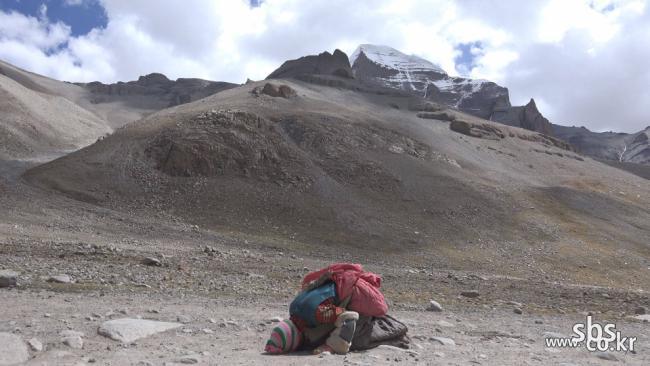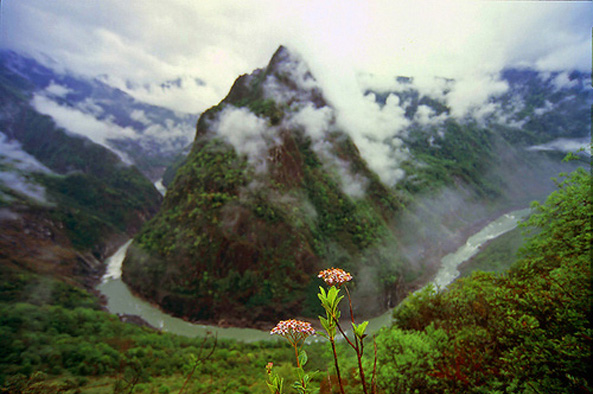[SBS 스페셜] 드디어 베율을 찾았다
lifenewsteam medical@medicalworldnews.co.kr
[SBS스페셜]이 드디어 베율을 찾았다.
베율은 티베트 불교의 창시자 파드마 삼바바가 예언한 전설의 땅으로 현대인이 겪고 있는 절망과 고통을 잊게 해준다는 꿈의 파라다이스다. 신화에 등장할 법한 이곳은 티베트의 정신적 지도자 14대 달라이라마도 그 지리적 실체를 인정한 곳이다. 1998년 미국 탐험가 이안 베이커에 의해 발견된 “베율”을 찾아 [SBS스페셜] 원정 탐험대는 장장 6,600km의 180일 간의 여정을 소화해 냈다.


지식의 사자(使者)
인도 시킴에 위치한 남걀 티베트학 연구소에서 박정헌 탐사대장은 <지식의 사자>라는 베율에 대한 새로운 단서를 발견했다. [지식의 사자]는 16세기 티베트 왕 린풍파가 베율에서 환생한 그의 아버지께 보내는 편지이다. 린풍파는 편지를 전달할 사자(使者)들을 위해 글 서두에 베율로 가는 경로를 매우 구체적으로 묘사해 놨다.
그 출발점은 티베트의 수도 라싸이다. 그는 티베트 일대를 가로지르며 라마승들을 만나 베율로 가는 지혜를 구하라고 이야기 한다. 그리고 그들에게 베율을 찾으며 겪게 될 난관과 시련을 이겨낼 힘을 얻으라고 조언한다. 그 뒤, 린풍파는 사자들이 황량하고 타들어 갈 듯 한 사막과 온갖 야생동물의 위협이 엄습하는 숲 등 극한으로 치닫는 고비를 맞게 될 거라 예언한다.
이 지역들을 통과해야 비로소 마지막 난관이 될 지역에 들어서게 된다. 지리상으로 오늘날 파키스탄 부근인 이곳을 린풍파는 마치 성난 악마가 길을 막아 놓은 것 같다고 묘사했다. 눈 쌓인 거대한 바위벽과 치솟은 산이 그곳을 지나는 이의 발걸음을 위협하지만 이 난관을 지나야 비로소 베율에 도착한다고 했다. [SBS스페셜]의 베율탐사대는 [지식의 사자]에 적힌 경로를 어떻게 통과했을까?
강 린포체, 영혼의 보석
인도 시킴에 위치한 남걀 티베트학 연구소에서 박정헌 탐사대장은 <지식의 사자>라는 베율에 대한 새로운 단서를 발견했다. [지식의 사자]는 16세기 티베트 왕 린풍파가 베율에서 환생한 그의 아버지께 보내는 편지이다. 린풍파는 편지를 전달할 사자(使者)들을 위해 글 서두에 베율로 가는 경로를 매우 구체적으로 묘사해 놨다.
그 출발점은 티베트의 수도 라싸이다. 그는 티베트 일대를 가로지르며 라마승들을 만나 베율로 가는 지혜를 구하라고 이야기 한다. 그리고 그들에게 베율을 찾으며 겪게 될 난관과 시련을 이겨낼 힘을 얻으라고 조언한다. 그 뒤, 린풍파는 사자들이 황량하고 타들어 갈 듯 한 사막과 온갖 야생동물의 위협이 엄습하는 숲 등 극한으로 치닫는 고비를 맞게 될 거라 예언한다.
이 지역들을 통과해야 비로소 마지막 난관이 될 지역에 들어서게 된다. 지리상으로 오늘날 파키스탄 부근인 이곳을 린풍파는 마치 성난 악마가 길을 막아 놓은 것 같다고 묘사했다. 눈 쌓인 거대한 바위벽과 치솟은 산이 그곳을 지나는 이의 발걸음을 위협하지만 이 난관을 지나야 비로소 베율에 도착한다고 했다. [SBS스페셜]의 베율탐사대는 [지식의 사자]에 적힌 경로를 어떻게 통과했을까?
강 린포체, 영혼의 보석


“(베율로 가려면) 라싸에서 출발해 시가체로 가라. 그런 다음 성스러운 산 카일라스로 가라. 그리고 길가에 지어진 사원과 성지를 방문하고 라마승들을 접견하라.“ -지식의 사자 첫 번째 장-
[지식의 사자]를 좇아 라싸에서부터 카일라스까지 티베트 일대를 가로지르기 위해 베율 탐사대가 산악자전거에 몸을 실었다. 티베트는 1951년 중국 공산당에 무력침공 당해 아직까지 식민지 상태에 놓여있다. 이러한 역사적 배경 속에서 티베트 인들의 정신과 신념을 지켜준 것이 바로 티베트 불교였다.
첫 출발지인 라싸는 ‘신의 땅’이라는 본래의 뜻과는 달리 변해있었다. 티베트 불교의 정신적 지주 달라이 라마의 거처 포탈라궁은 관광지로 변해 돈벌이 수단이 되어버렸고, 자신의 몸을 신께 바쳐 기도하는 오체투지 또한 구걸행위가 되어버렸다.
마지막 기대를 걸고 탐사대가 향한 곳은 순례자들의 발길이 끊이지 않는 4대 종교(불교, 힌두교, 자이나교, 뵌교)의 성지 ‘카일라스’다. 과연 그곳에서 탐사대는 베율에 이르는 지혜를 찾을 수 있을 것인가?
코라, 순례자의 길
“길은 점점 험난해질 것이다. 눈앞에 거대한 바위벽과 하늘을 찌를 듯 한 눈 산맥이 길을 막고 있을 것이다. 여기서 절망해서는 안 된다.” - 지식의 사자 마지막 장
<지식의 사자>에 언급된 마지막 여정은 티베트를 지나 파키스탄으로 이어진다. 베율 탐사대가 파키스탄에 첫 발을 내딛자마자 무장 경찰이 탐사대의 여정에 동행했다. 평소에도 탈레반에 의한 크고 작은 테러가 끊이지 않아 항상 위험하기 때문이다.
베율을 찾으려면 우선 파키스탄 깊숙한 곳으로 들어가 거대한 바위벽과 눈 덮인 산맥을 가로질러야 한다. [지식의 사자]에선 이러한 고난의 땅을 지나야 비로소 눈 속에 파묻힌 계곡이 펼쳐지고, 그곳에서 진주빛깔로 빛나는 베율을 발견하게 된다고 한다.
탐사대는 파키스탄 북쪽 끝에서 평균 고도 5000m에 위치한 세계에서 가장 긴 길이의 빙하지대에 도착했다. 그곳은 거대한 빙퇴석이 길을 막고, 양 옆으로 높은 설산이 병풍처럼 이어진 지형이었다.
얼음과 흙 외에는 아무것도 존재하지 않는 빙하 위, 고소와 추위에 맞서는 베율 탐사대의 치열한 고난기가 계속된다. 그리고 마침내 빙하를 벗어나 탐사대 앞에 새로운 모습의 땅이 드러났다. 이곳은 [지식의 사자]에 언급된 베율의 모습, 숨겨진 계곡과 매우 흡사했다. 과연 그들이 찾은 베율은 어떤 곳이었을까. 탐사대가 발견한 곳이 베율의 지리적인 실체를 이번 주 방송되는






